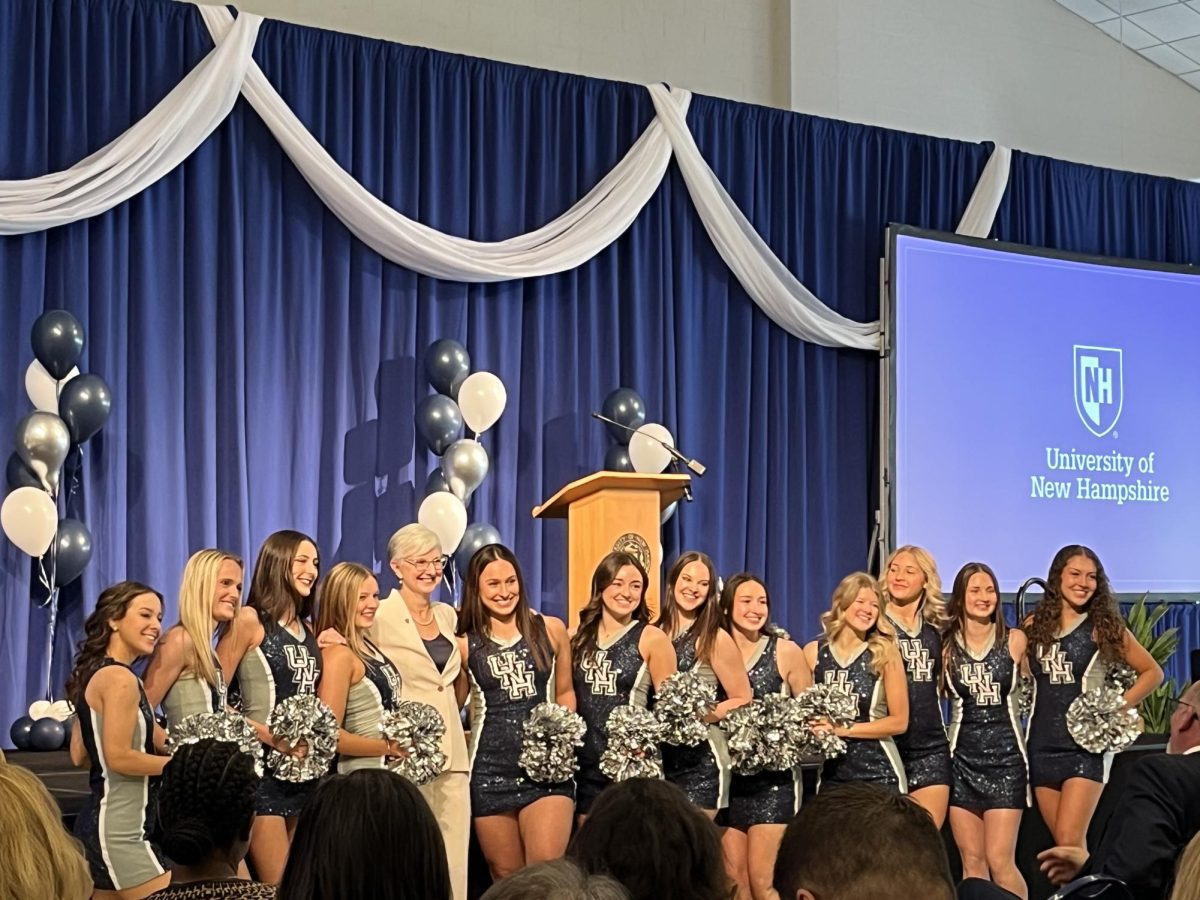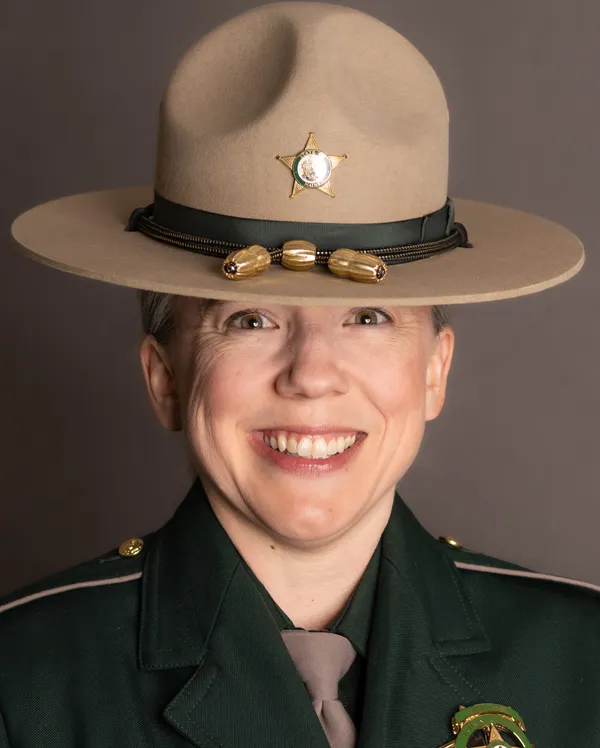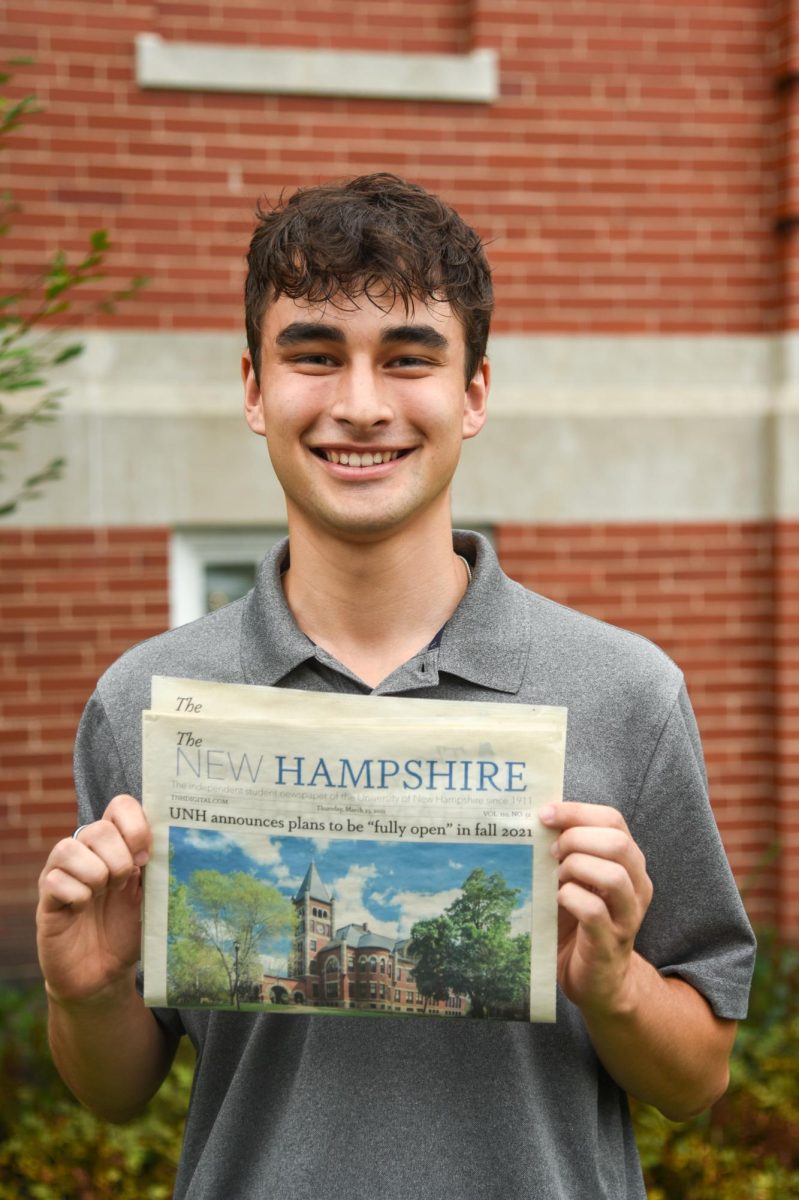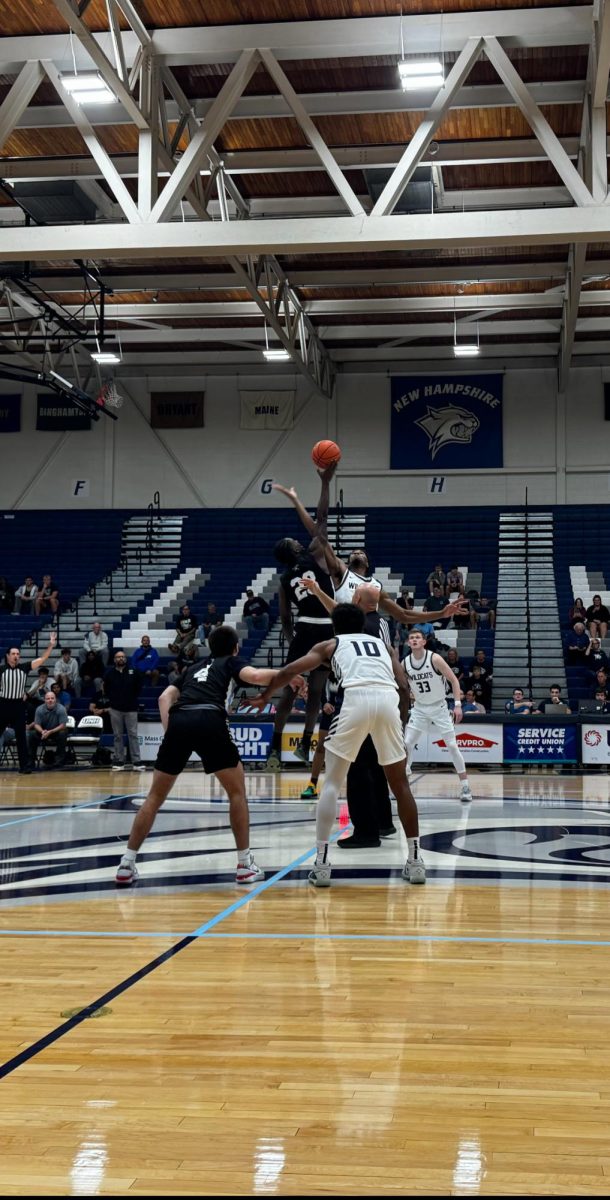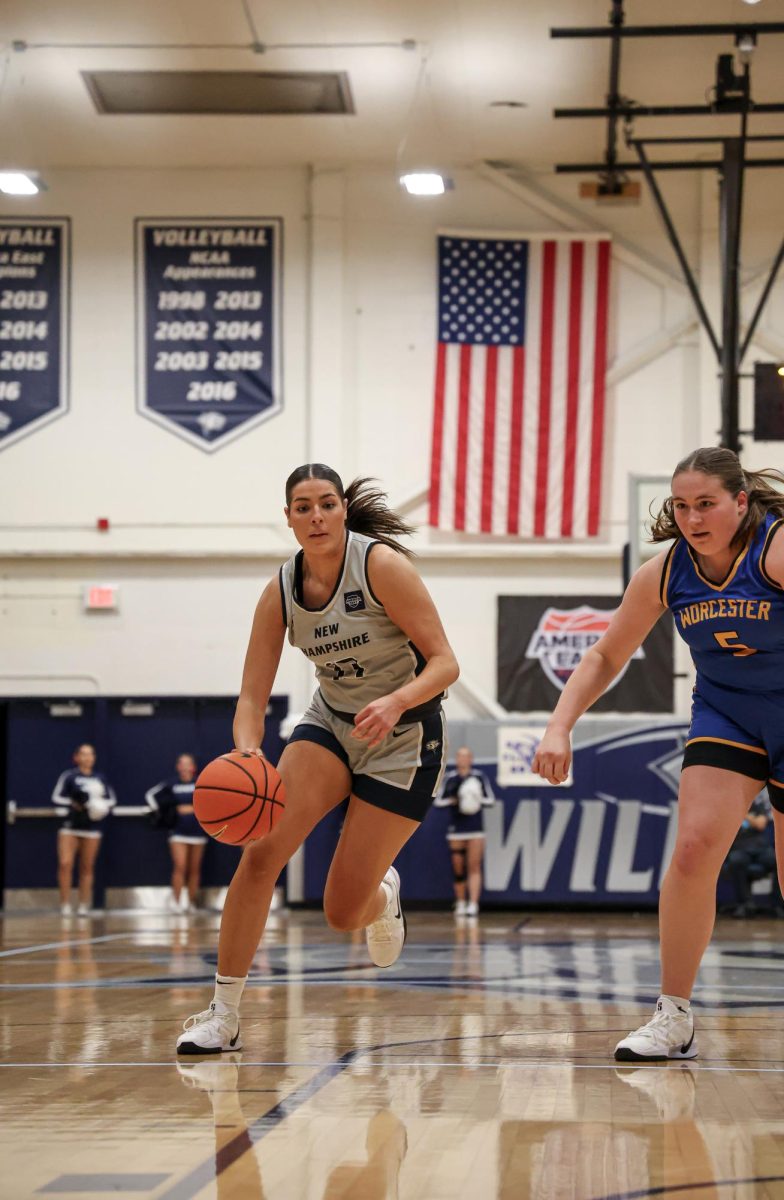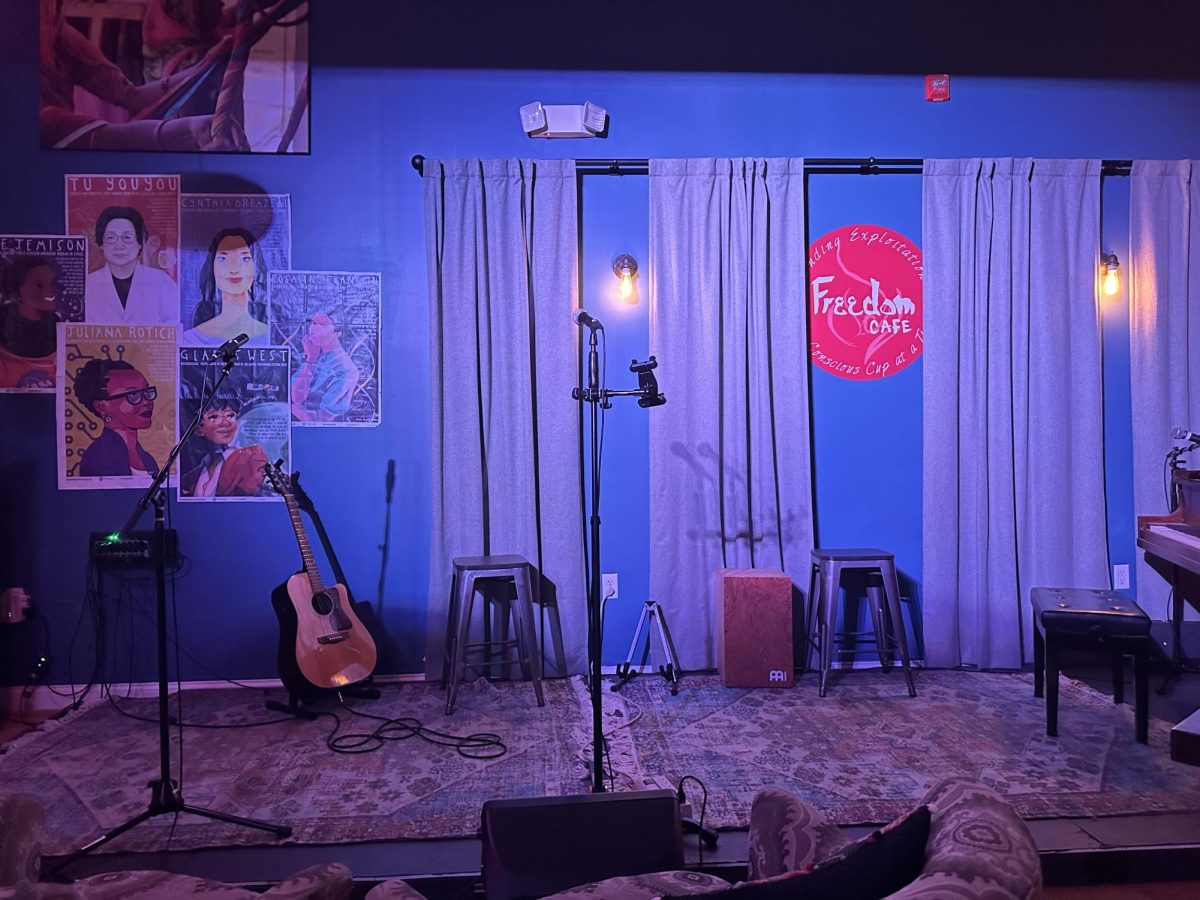The University of New Hampshire community welcomes students and the general public through Oct. 30 to view the work of visual artist and scholar Fahamu Pecou on display at the Durham campus’ Museum of Art in the Paul Creative Arts Center.
The exhibition, entitled “DO or DIE: Affect, Ritual, Resistance,” is organized in a collaboration featuring the Halsey Institute of Contemporary Art, College of Charleston School of the Arts and the Michael C. Carlos Museum of Emory University.
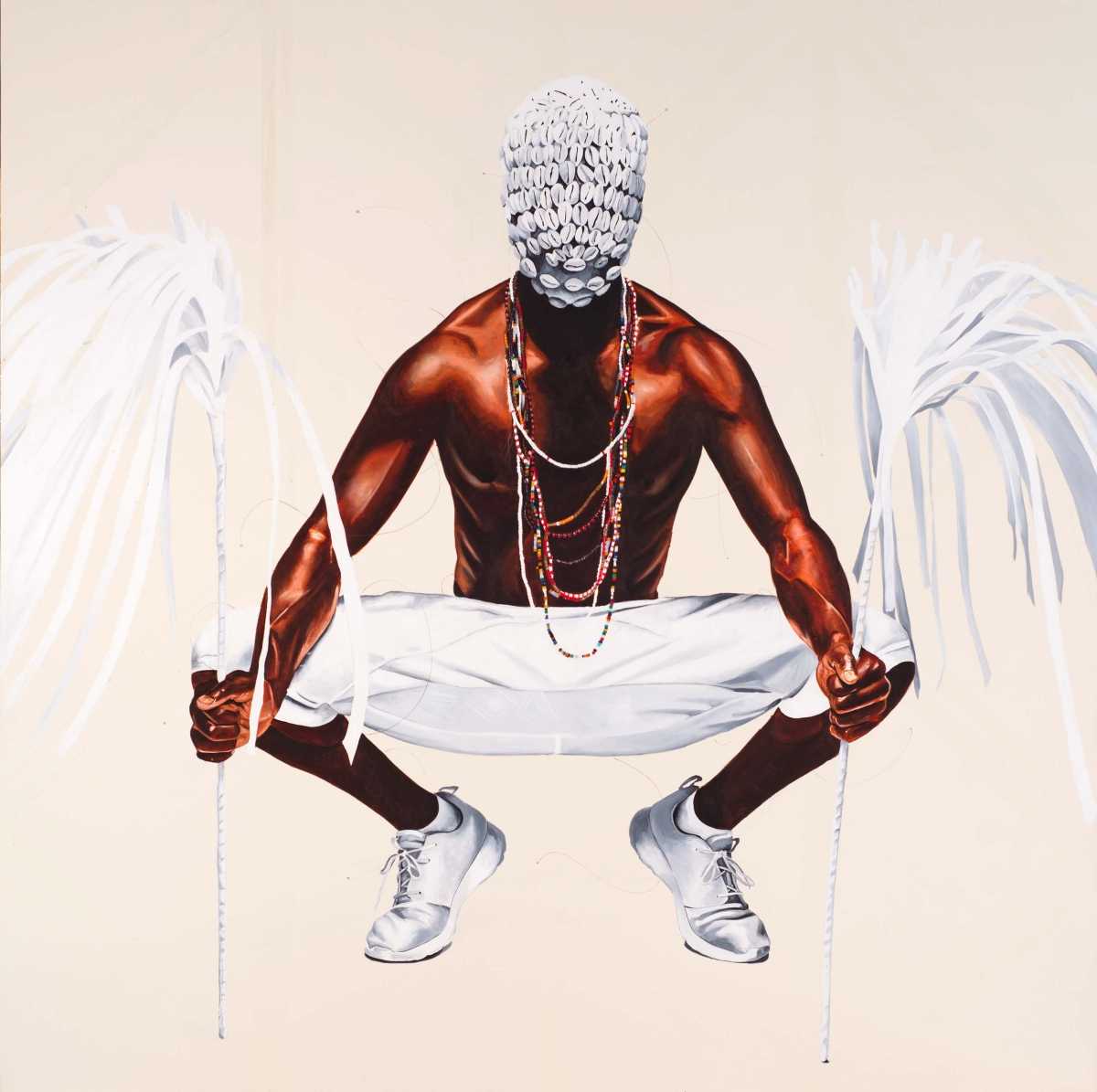
Pecou spoke to an audience of students, faculty and community members on Tuesday, taking them on a tour of his themes and thought processes.
“I see my work as a continuous process of interrogating and editing,” he said. “Instead of perpetuating [stereotypes], ask questions instead.”
“My work incorporates African spirituality as a part of a trilogy which remembers the conceptual black body,” Pecou added. “This triad considers the somatic attitude of hip-hop(body), concepts inherent to the movement called Negritude (mind), and Yoruba spiritual cosmology (spirit).”
Born in Brooklyn, Pecou lived in South Carolina before finally settling in Atlanta, and vividly recalls one moment in his adolescence that drove him to the art world.
“When I was 18 years old, I saw the film Menace II Society,” he recalled. “In it, a young man named Caine is trapped in a life of crime and violence. With the help of others, he is ready to escape to a better life when he is gunned down in a drive-by shooting.
“This was very troubling to me; I felt like a statistic, like my life could end at any time,” Pecou continued. “It seemed like my life simply became a cycle of avoiding tragedies. At the age of 30, I realized this does not have to be.”
The artist also explained how philosophy and spirituality are integral to his work, stating that “[i]n view of recent tragic events, such as police shootings, it is useful to understand how African culture approached death before westernization.
“The African philosophy ‘remembering’ is prevalent in my work. Egyptian folklore recounts the tale of Osiris. Osiris was killed and dismembered by his brother Set, only to have wife Isis rebuild him from the scattered remains. This idea is applied to the black diaspora as aspects of black subjectivity have been both literally and conceptually dismembered over the course of centuries through various acts of cultural, social and physical violence enacted on black bodies. This exhibition approaches these ideas by representing a black male spirit that seeks permission from the Divine feminine (‘God’) to return to the physical world. Only then can he reenter life, through the woman,” he said.
A series of paintings in the exhibit speak to this concept. It features a tall robed and hooded figure that represents a contemporary connection to the Egungun tradition. The Egungun masquerade in Yorubaland represents ancestral spirits who return to a village and interact with the living. For many observers, Pecou created a “New” World Egungun model showcasing strips marked with the names of victimized black males.
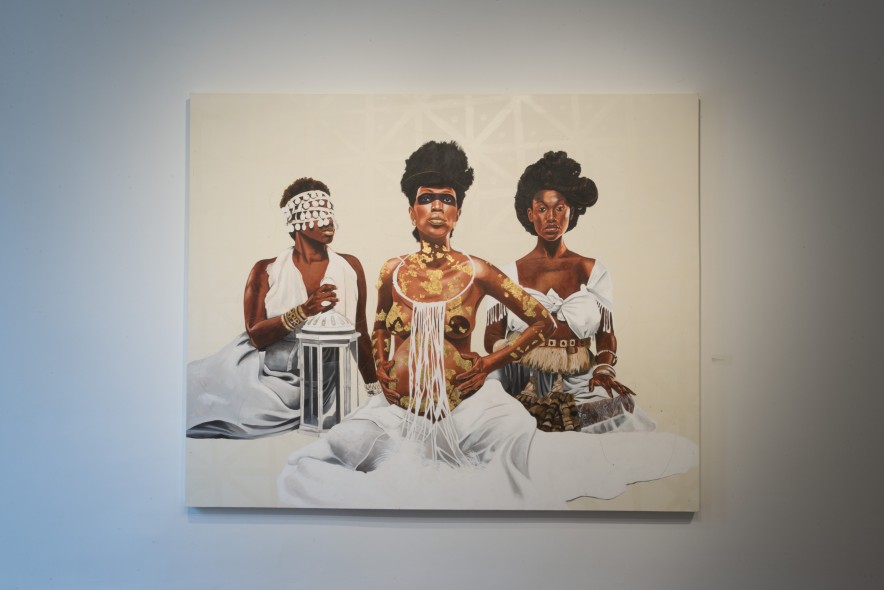
Pecou expresses himself not just through paintings, but through music and film as well. He said he was inspired by rapper Andre 3000, while also emphasizing the importance of family.
“I like to say that when my daughter was born, she gave me life,” he said. “And when my son was born, he gave my life purpose.”
Among those in attendance was Aria S. Halliday, an assistant professor of Africana feminisms (women’s studies). Halliday teaches “Leadership for Social Change,” and her students were in attendance as well.
“The exhibit and presentation were remarkable, showing how social justice can be enacted through art,” Halliday said. “I brought my class here to illustrate how art has an important voice; it causes us to ask questions. These images connect with the viewer and inspire more research of the subject.”
Kristina Czoschke is a junior art major who is currently taking an “Intro to Woodworking” course at UNH.
“I appreciated the way [Pecou] took traditional symbols from his culture and incorporated it to create a message in relation to current events such as a sign of protection to those who are wrongly persecuted,” Czoschke said, “which is a beautiful way to remember the culture that was erased through colonization and use it to still speak to the injustices of today that are the results of said colonization. It’s like poetic justice.”“
He mentioned he would have open studio days,” she said, “where those of the community can come in and react to his work which then he would either accept or defend against the criticism. Which is a fascinating process; I can’t recall another artist doing such a thing.”
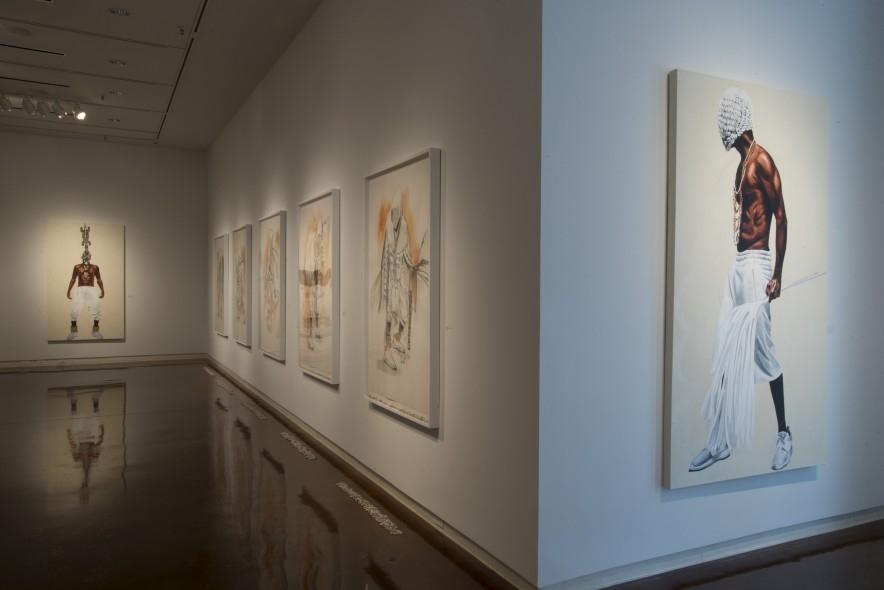
Freshman Allison Lawson is taking a ceramics course and is interested in oil painting as well.
“It was great meeting someone of color and learning how they perceive the world,” Lawson said. “Fahamu really speaks from the heart. I admire how he was able to get over his own trauma – and concerns about the world around him – through his art.”
“This exhibit is very significant in light of the current events surrounding us every day,” senior English major Terri Duhamel, an employee at the museum, said. “It was heartbreaking and eye-opening to hear how people of color think about life and death on a daily basis. This exhibit is a symbol of hope, peace and serenity for the black community to know that they are not alone in the world.”“
The paintings provoke deep thought when viewed in isolation,” said Dean Wilburn of the College of Liberal Arts as he shared his thoughts on the exhibit. “These particular images that illustrate the dismembering and remembering of the black male body is significant; it leads to the image of a black woman who is bringing him back to the living world…When you put all of these images together in moments of isolation and thought, they force us to rethink the stereotypes of the black male.”
At the end of each of his emails, Pecou signs off with the following lines, illustrating yet another sign of his personal commitment to his craft and mission:
“create like a god.
command like a king.
work like a slave.
love like a mother.”


